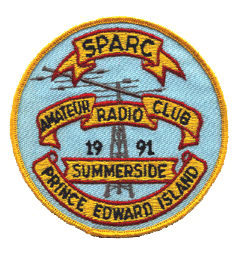Coax and Ladder-Line Info
Basic Feedline Facts for Hams
- RG-174 (50 ohms) is very small (~0.11″) and lossy. Suitable only for short pigtails and jumpers at very low power, as in receivers, scanners, etc.
- RG-58 (50 ohm) is about 0.195″, quite lossy, suitable only for mobile installations (typically < 20 feet, < 150 watts).
- RG-6 (75 ohms) is about 0.332″, typically used for cable/satellite TV.
- RG-8X (50 ohm); and and RG-59 (75 ohm) are about 0.24 inch. Suitable for medium power (~350 watts), HF and Lo-VHF.
- RG-8 and RG-213 (50 ohm); and RG-11 (75 ohm) are about 0.405 inch. Suitable for higher power (~1800 watts) at HF.
- 9913 and LMR-400 are popular “low-loss” RG-8 types. Suitable for VHF (~1.5dB loss per 100 feet at 146 MHz). The flexible types (9913F and LMR-400UF) are preferred, particularly for rotatable antennas. However, stranded center conductors have a little higher loss than solid ones.
- There are at least four commonly-used types of coax dielectric: (1) semi-solid polyethylene (PE) for temps up to 80°C (Vp 66%); (2) gas-injected PE (foam PE) for temps up to 100°C (Vp ~85%); (3) air-core: a thinner PE with a PE strand spiraled around the inner conductor (Vp ~85%); and (4) PTFE (Teflon) for temps up to 250°C.
- All foam-type coax cables should be taped—not attached with plastic cable ties or wire—to tower legs, etc., to prevent deforming of the foam dielectric.
- Windowed ladder-line (WLL) should be (1) kept at least a few inches from metal (to prevent magnetic induction losses); (2) twisted 1/2 turn per foot (to prevent wind flap); and (3) turned at a large radius (12 inches or more). It has a VF of 91-95%. See also KV5R’s Ladder-Line pages.
- Though frequently ignored, all RF transmission lines have maximum RMS voltage, and maximum power (wattage), which varies with type, brand, and frequency.
- How much attenuation is acceptable? Well, a mere 3dB will waste 50% of your wattage!
More Info at: https://kv5r.com/ham-radio/coax-loss-calculator/
